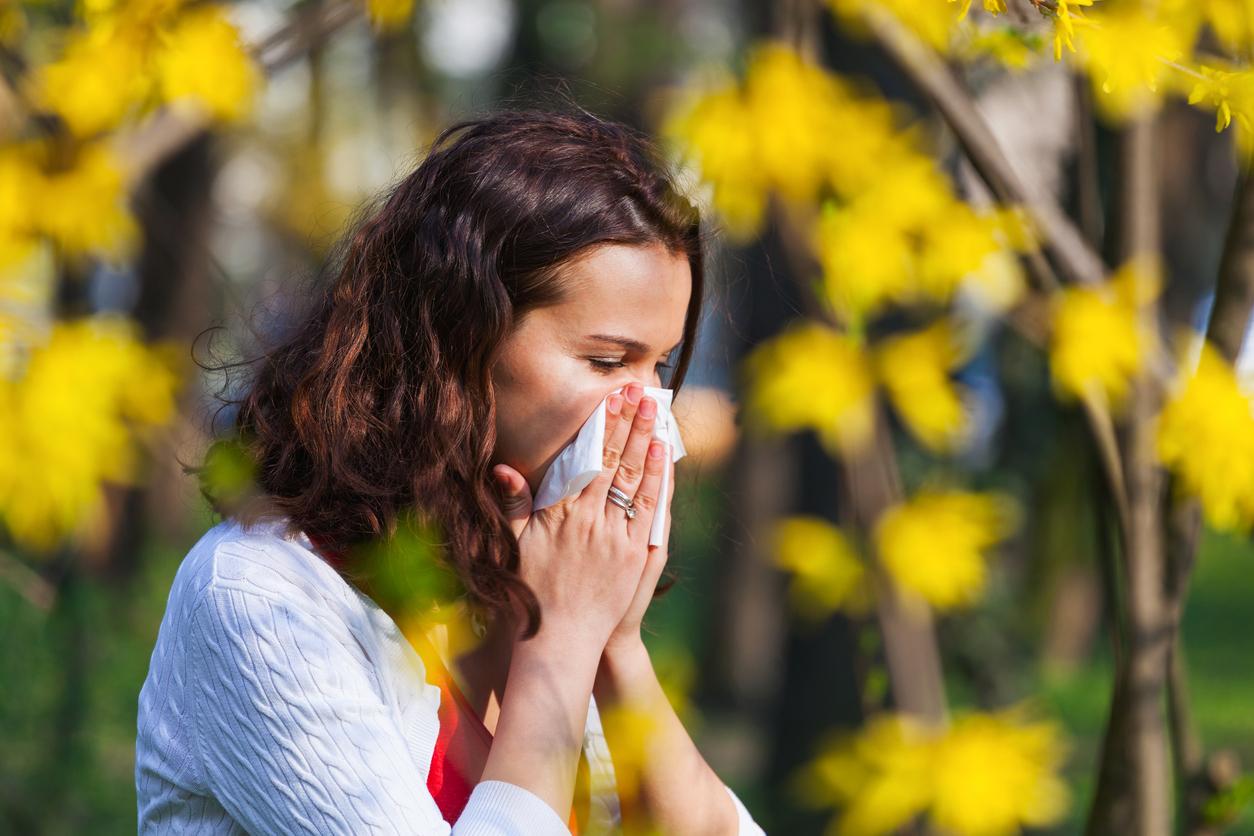“Ragweed will already be a nuisance in areas of full infestation for very sensitive people”, indicates the National Aerobiological Surveillance Network (RNSA).

In this last week of July, those allergic to ragweed will already start to be bothered. As the plant continues to grow, it has been reported to be flowering at two different botanical gardens (Lyon and Nancy). “Ragweed will already be a nuisance in areas of full infestation for very sensitive people. The risk will however remain very low to low in the Rhône valley between Lyon and Montélimar and on the Dauphiné”, indicates the National Aerobiological Surveillance Network (RNSA). The forecast models predict the first peak of ragweed pollen between August 5 and 8.
The effects of ragweed on the body are similar to those of hay fever. The allergic symptoms and signs are multiple and often unpleasant:
Breathing difficulties: asthma (cough, shortness of breath…).
· Rhinitis: sneezing, runny nose …
Conjunctivitis: red, itchy, itchy eyes.
Tracheitis: dry cough.
· Other rarer allergic reactions such as: hives, itching, pimples, etc.
These symptoms cause general discomfort, difficulty sleeping (sleep apnea), fatigue, stress, irritability, even penalizing disturbances of concentration (work, etc.).
375 euros fine
Last year, France stepped up its measures to combat plant species harmful to human health, and particularly ragweed. Two texts published in Official newspaper set various goals. The first is a decree, which aims to “limit or prohibit the introduction, transport, use, offering for sale, sale or purchase, in any form whatsoever, of plant species harmful to health “. Thus, it is prohibited to introduce “intentionally into the national territory, including if only in transit” of harmful plant species, “except for the purpose of destruction”. These toxic specimens cannot be “used, exchanged or cultivated, in particular, for reproduction”, nor be “transferred free of charge or against payment, including mixed with other species”. These prohibitions apply to all individuals, but also to businesses.
A second text published in the Official Journal lists mugwort-leaved ambrosia (Ambrosia artemisiifolia L.), smooth-spiked ragweed (Ambrosia psilostachya DC.) And trifid ragweed (Ambrosia trifida L.). “The pollen of these plants causes severe allergic symptoms (rhinitis, conjunctivitis, eczema, urticaria …) and can cause the onset or worsening of asthma”, recalls the decree. Thus, failure to comply with these prohibitions “constitutes an offense punishable by the fine provided for contraventions of the fourth class” (135 euros, 375 euros maximum).
77 million people by 2050
In Europe, 33 million people are affected by an allergy to ragweed, a figure which is expected to increase in the coming years. It could reach 77 million by 2050, according to the scientific journal Environmental Health Perspectives. “The problem is likely to grow in countries that already face ragweed, such as Hungary or the Balkan countries,” said Dr Lake, of the Department of Environmental Sciences at the University of East Anglia, responsible for a study on the question. But the biggest increase in proportion will concern France, Poland and Germany. “
Blame it on global warming, which allows the plant to gain a little ground each year towards more northern regions, but not only. A third of the spread is thought to be due simply to the natural expansion of ragweed, which is conquering new ecosystems. The fight against the plant, the uprooting, will therefore have an influence on the speed at which it will develop.
According to the researchers’ calculations, if effective measures are taken, the increase in the number of affected people could be limited to 52 million people. On the other hand, in a worst-case scenario, passivity could push that number up to 107 million, or one in five Europeans. “A higher concentration of ragweed pollen and a longer exposure season may increase the severity of symptoms, adds Dr Lake. In France and northwestern Italy, they could appear more early in the season, from mid-July, and persist until mid-October. “

.

















